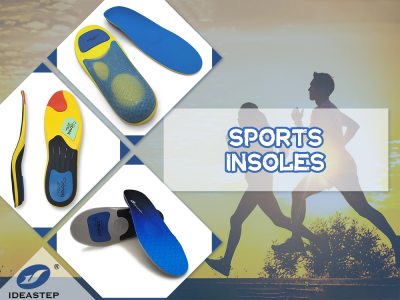
Insoles play a crucial role in providing comfort, support, and performance enhancement for athletes across various sports. The specific demands of different sports necessitate the use of specialized insoles tailored to the unique biomechanical requirements and movement patterns associated with each activity. This article aims to explore the differences between insoles designed for different sports, highlighting the specific features and benefits that cater to the distinct needs of athletes in various athletic disciplines.
1. Running
Insoles for running are engineered to provide ample cushioning and shock absorption to mitigate the impact forces generated during repetitive foot strikes. They often feature a combination of cushioned foam and gel inserts to reduce the risk of overuse injuries, such as shin splints and stress fractures. Running insoles also prioritize arch support and heel stabilization to promote proper alignment and reduce the risk of pronation or supination-related issues.
2. Basketball
Basketball insoles focus on enhancing lateral stability and ankle support to accommodate the frequent changes in direction, abrupt stops, and high-impact movements characteristic of the sport. These insoles often incorporate rigid arch support and reinforced heel cups to minimize the risk of ankle sprains and provide reliable support during quick lateral movements and jumps. Additionally, cushioning in the forefoot and heel areas helps absorb the shock from jumping and landing.
3. Soccer
Insoles for soccer emphasize metatarsal support and forefoot cushioning to enhance ball control, agility, and comfort during rapid acceleration and deceleration. They are designed to provide a balance between flexibility and support, allowing for optimal foot responsiveness while reducing the risk of metatarsal injuries and turf toe. Soccer insoles also prioritize moisture-wicking materials to manage sweat and maintain a dry, comfortable foot environment throughout the match.
4. Tennis
Tennis insoles prioritize lateral stability and arch support to accommodate the quick lateral movements, pivots, and sudden changes in direction inherent to the sport. These insoles often feature a combination of cushioning and shock-absorbing materials in the forefoot and heel areas to minimize the impact of abrupt stops and explosive movements. The emphasis on arch support helps reduce the risk of overpronation and provides stability during multidirectional footwork.
5. Cross-Training
Insoles designed for cross-training activities aim to provide a versatile balance of cushioning, support, and responsiveness to accommodate a wide range of movements, including running, jumping, and weightlifting. They often feature a combination of shock-absorbing materials, such as EVA foam and air cushioning, to cater to the diverse demands of cross-training workouts. These insoles prioritize flexibility and multidirectional support to facilitate seamless transitions between different exercises.
In conclusion, the differences between insoles for various sports are tailored to address the specific movement patterns, impact forces, and stability requirements associated with each athletic discipline. We have designed insoles that provide support for various types of sports. If you are interested in them, you can continue to visit this page (https://www.aideastep.com/sports-insoles/) and tell us your needs.
